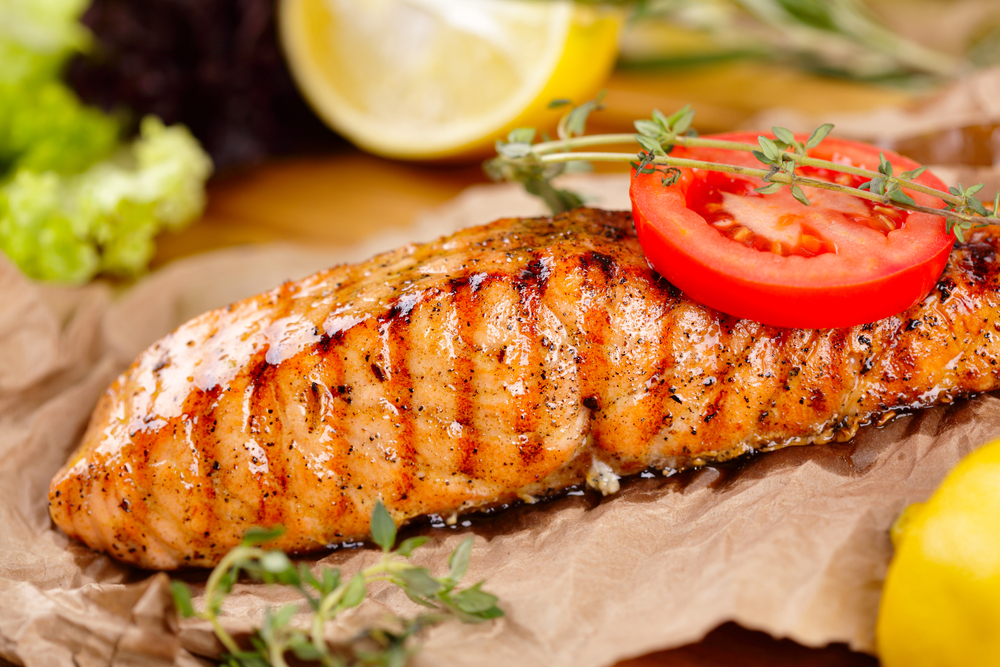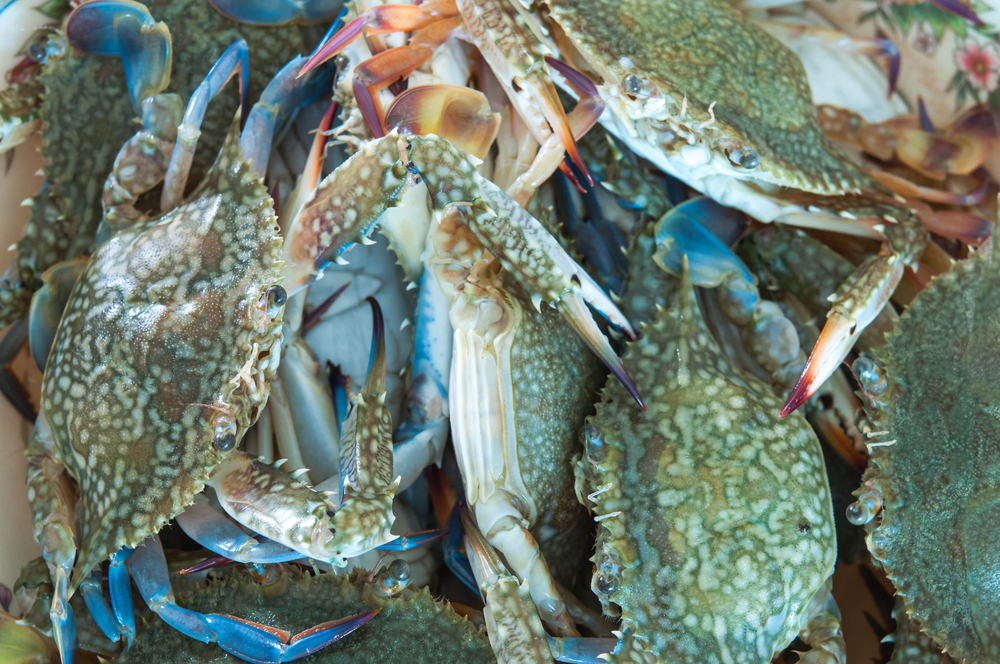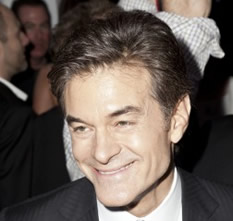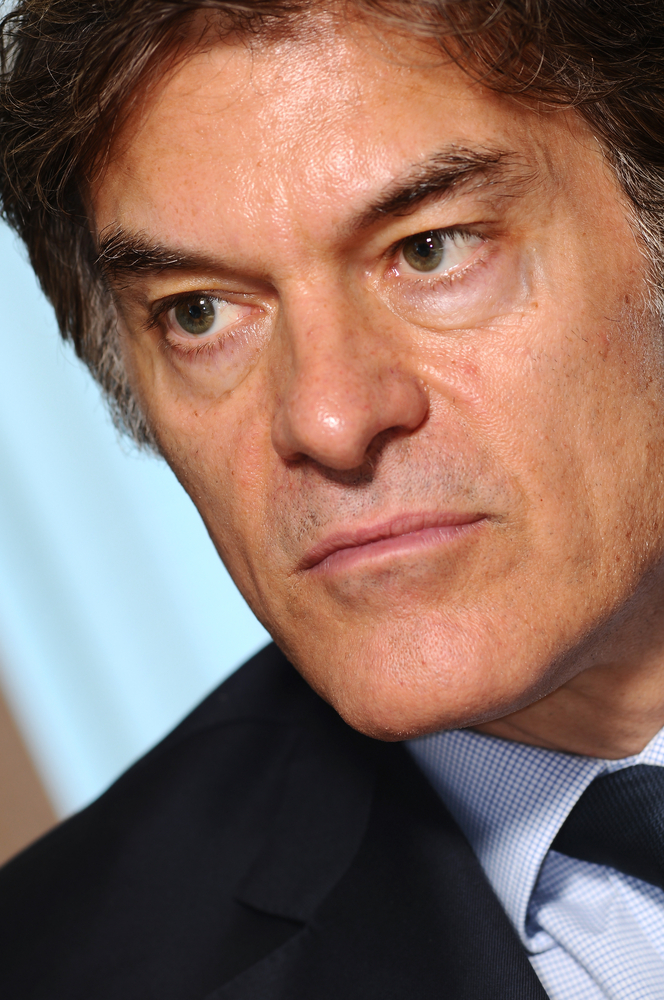All posts by admin
Updated Dietary Guidelines Suggest Shifting to Seafood
In January the U.S. Departments of Agriculture and Health and Human Services jointly issued the 2015-2020 Dietary Guidelines for Americans. The Dietary Guidelines is updated every 5 years to reflect the latest in published nutrition science. This report is designed to form the foundation of dietary advice that healthcare professionals share with patients, as well as inform federal nutrition programs, such as the Special Supplemental Nutrition Program for Women, Infants, and Children (WIC) and the National School Lunch Program.
According to the Dietary Guidelines, nearly half of all Americans have one or more preventable, diet-related chronic diseases, such as heart disease, hypertension and type 2 diabetes. However, small changes in diet and lifestyle can result in weight loss and a reduced risk of developing one of these chronic diseases.
The 2015 Dietary Guidelines recognize the importance of these small changes by focusing on healthy eating over a lifetime. Unlike previous editions of the Dietary Guidelines, the most recently updated version focuses on overall eating patterns designed to meet Americans where they currently are as opposed to focusing on individual foods or nutrients in isolation.
It is no surprise that the updated Guidelines recommend Americans eat a variety of vegetables, fruits and whole grains, and limit saturated fat, sodium and added sugars. New to the Dietary Guidelines, however, is the recent recommendation for Americans to eat a variety of protein-rich foods. In fact, the Guidelines go one step further and suggest that individuals shift to more nutrient-dense protein options, like seafood, nuts and seeds, soy and beans.
The 2015 Dietary Guidelines are clear that Americans currently eat an adequate amount of protein, but average seafood consumption is well below recommendations in all age and gender categories. Therefore, most individuals don’t need to eat more protein, they just need to eat more of a variety of protein-rich foods. The Guidelines recommend making this shift by “incorporating seafood as the protein foods choice in meals twice per week in place of meat, poultry, or eggs” and suggest choosing a salmon steak or tuna sandwich to increase protein variety.
Seafood also plays a prominent role in two eating patterns that the Guidelines recommend Americans should shift towards. The American-style eating pattern suggests that individuals eat at least two seafood meals (or about 8-12 ounces) every week, while the Mediterranean-style eating pattern—long associated with heart health and longevity—includes even more seafood each week, up to 17 ounces.
Additionally, the 2015 Guidelines also clearly advise pregnant and breastfeeding women to eat at least 2-3 meals (or 8-12 ounces) of a variety of seafood every week. The omega-3 fatty acids DHA and EPA found in fish help improve baby’s brain development, as well as mom’s heart. The Guidelines also recommend that obstetricians and pediatricians provide guidance on how to make healthy food choices that include seafood.
Decades of research support the recommendations to eat more seafood for heart health, brain development in babies and young children, brain health at all other life stages and bone health, among other health benefits, as well. Seafood is rich in nutrients Americans just don’t get enough of—omega-3 fatty acids, vitamin D, B vitamins and iron—and low in nutrients Americans do, like saturated fat.
The recently-released Guidelines suggest that—for the first time—federal dietary guidance on seafood is finally catching up to the science. Finally, there is government nutrition advice—for registered dietitians, doctors and policymakers—that recognizes the importance of eating seafood during all life stages, particularly during pregnancy. Perhaps, future seafood advice for healthcare professionals, organizations and consumers will be as clear, concise and science-based.
The 2015-2020 Dietary Guidelines for Americans is available at dietaryguidelines.gov.
New York Times Promotes Preposterous Oceans Parable
The Old Gray Lady has a well-documented propensity for embracing the panacea of smiley, happy, universal sustainability without digging too far into the reality of some of its favorite strategies. Just searching New York Times on this site alone brings up dozens of examples where the Times choses an agenda driven narrative over actual research.
This week is no different as the Times published an interview with biologist E. O. Wilson as part of his promotion of a new book. In the interview, and apparently the book, Wilson boldly suggests we set aside half of the planet to let it recover and that we go about our business while it does so.
Part of that 50% would be a little thing called “the oceans” because, according to Wilson, “we need to stop fishing in the open sea and let life there recover.” This strategy goes completely unchallenged by writer Claudia Dreifus. But the folks at CFood didn’t let it slip without pointing out the lack of science and near delusion associated with the reality of this idea. Their posting is worth a read.
Balanced Budget Blueprint Calls for Elimination of Catfish Program
The Washington, D.C. based Heritage Foundation is out with its new blueprint for balancing the Federal Budget and one of its recommendations is to “repeal the U.S. Department of Agriculture’s (USDA’s) catfish inspection program.”
In an effort to cut out duplicative and wasteful spending Heritage blasts the program as “costly duplication” that is an “unjustified trade barrier.” The group also notes, “the retaliation would likely come against industries other than the catfish industry, such as milk producers or meat packers. American consumers also would suffer because this program would reduce competition.”
Today’s latest call for repeal of the duplicative USDA catfish regulation is more evidence that it is one of Washington’s most wasteful and unpopular programs and opposition continues to grow.
NFI Crab Council Seeks New Asia Liaison
The National Fisheries Institute’s (NFI) Crab Council is looking for a new Asia Liaison. The position is the primary in-region contact for the Council’s fishery improvement projects and works collaboratively with companies, governments, NGO’s and trade associations.
The Liaison position, located in Indonesia, is responsible for oversight, progress reporting and resource coordination. The Liaison is additionally responsible for stewardship of council expansion into crab producing countries.
Interested candidates should contact Gavin Gibbons 703.752.8891 ggibbons@NFI.org
Greenpeace Illustrates How Out Of Touch It Can Be
As Greenpeace continues its efforts to raise funds by randomly attaching itself to any issue it thinks will garner a headline, the group’s hyperbolic talking-point- diarrhea has apparently struck again. This time the group is suggesting companies not communicate about the health benefits of seafood. That’s right. Greenpeace woud like seafood supppliers to stop, “trying to convince us your seafood is going to make us healthier.” That’s their latest effort?
It reminds me of the stellar decision making that went into a campaign years ago promoted by another similarly marginalized group. You’ll remember when they asked food banks not to distribute donations of canned tuna during the holiday season. Yes, that really happened.
So, whether it’s Greenpeace challenging the proven health benefits of seafood or others of their ilk trying to take food out of the mouths of those in need, illustrations of obsurdity in action abound.
Seafood Fraud Gets Costly In San Diego
In case you were wondering, the City Attorney in San Diego does not mess around when it comes to menu mislabeling. If you think it’s a good idea to defraud consumers by putting one fish on the menu but serving them a different, cheaper, fish it’s time to reconsider your business model.
A “truth-in-menu” investigation, launched last year, took aim at seafood fraud and has now resulted in eight criminal convictions. Eight sushi restaurants were nailed for deceiving customers. Not only did they earn themselves a criminal conviction but California law requires them to reimburse all of the investigation costs.
Let’s review; Sushi restaurants in San Diego were suspected of cheating consumers via seafood fraud, officials investigated and confirmed that suspicion, the prosecutors not only convicted them but made them pay for the investigations that ended in their own conviction… ouch.
Who said crime doesn’t pay?
Open Letter To The Woods Hole Oceanographic Institution Media Relations Office
We read with great interest your release titled Higher Levels of Fukushima Cesium Detected Offshore.
Quick question for you. Are you trying to scare consumers and negatively impact the lives of hardworking fishermen along the Pacific coast? Or are you just trying to gin up another round of funding for radiation testing work? Just wondering.
Feel free to respond on twitter @NFIMedia where we would be happy to have a public conversation about why you didn’t lead with any of the following facts mentioned in your release:
• “The [radiation levels found are] more than 500 times lower than US government safety limits for drinking water…”
• “…the levels of contamination off our shores remain well below government-established safety limits for human health or to marine life…”
• “Canadian scientists… have done sampling of fish and have not seen any Fukushima cesium in fish collected in British Columbia.”
• “… [Radiation] levels today off Japan are thousands of times lower than during the peak releases in 2011…”
Fear mongering press releases about radiation that maximize hyperbole, by design, are a disservice to consumers, fishermen and scientists who care about accuracy in reporting.
Repackaged, Warmed-Over PR Ploys From Greenpeace: Different Hashtag, Same Scam
How many times can Greenpeace recycle the same old publicity stunts before they finally exhaust the gullibility of the news media? That seems to be the wager behind the global fundraising organization’s announcement of its latest manufactured attack on the seafood industry.
In a press release Greenpeace executive John Hocevar—who lacks real-world expertise in fisheries management specifically and commercial enterprise generally—lists off imagined crimes against sustainability committed by the tuna industry and ominously warns “there is no future” for providing tuna to consumers. He threatens “a global pressure campaign” unless “the entire tuna industry” switches to fishing practices that he prefers.
But even basic examination shows this is another PR ploy, making irresponsible demands, driven by ulterior financial motives. Just three years ago, Greenpeace “launched” a virtually identical campaign—that time with the title and hashtag “Think Outside the Can.” Despite threats of “nationwide flash mobs,” only a handful of naïve activists took part in activities that were distinctly less than flashy, and the campaign quickly fizzled.
Now they are calling it “Not Just Tuna” and pretending that it’s some sort of brand new endeavor. But it’s the exact same publicity effort, with identical tactics. Ghostwritten emails sent to tuna companies in an underhanded technique known as astro-turfing? Check. Apocalyptic visions of the end of sea life as we know it? Same as before. Threats of mass protests that in reality turn out to be just a handful of Greenpeace employees? You can bet on it.
Last time around they even tampered with the labels on store-shelf canned tuna, a federal offense it’s worth noting.
These are simply not the actions of an organization that deserves to be taken seriously, even if, sadly, a few journalists are fooled by the charade.
But here are some questions that do warrant serious attention. If reporters like Amy Sawitta Lefevre and Khettiya Jittapong at Reuters and others are going to cover talking-parrot press releases from Greenpeace, then when are they going to apply some basic journalistic skepticism to what’s being squawked at them?
Greenpeace insists, for example, that all tuna must be caught one at a time, a method known as pole-and-line. But how could that possibly meet global demand without vastly increasing both the carbon output and cost incurred by a fleet of that kind? Have they done any research to find out? Apparently, no reporters have bothered to ask. Has Greenpeace ever done an environmental impact study of increasing the use of its preferred method? Has Greenpeace ever done an economic impact study to determine just how steeply consumer prices would spike under its preferred method? What would that mean for families on a budget who rely on affordable, nutritious canned tuna? Reporters who are giving Greenpeace free publicity don’t seem interested or even curious.
Yet those are the kinds of issues and public policy solutions that are carefully researched and deliberated every day at reasonable, responsible groups like the International Seafood Sustainability Foundation; the preeminent global body of scientists, NGOs, and leading seafood companies. But Greenpeace has contempt for that challenging and critical work. For more than five years now, they have refused a standing offer for a place at the ISSF table, where the real dialogue is happening on seafood policies and practices that keep the world’s fisheries safe and healthy. Instead they wander the ocean on a $32 million luxury yacht, replete with on-deck hot tub and helicopter, costing their donors more than $700,000 per day in overall operating costs. It’s a pleasure cruise so brazen that the crew boasts online about underwater dance parties and helicopter joyrides. Just take a look.
The truth is that Greenpeace’s financial burn rate requires them to gin up attention so they can justify renewed donations from gullible donors. It’s sad that some people fall prey to that kind of shell game — but news reporters ought to know better, and they owe the public a complete and balanced story.
It’s long past time for responsible journalists to start applying some scrutiny and skepticism to Greenpeace’s ludicrous fisheries management ideas. That’s why we will remind news organizations that Greenpeace has been evading legitimate questions for years about its methods and motives — and urging investigative coverage and accountability.
They’ve got a lot to answer for, but in the meantime there is some good news. The failures of the last several rehashes of Greenpeace’s attacks are a strong indication that the broader public caught onto their con long ago.
I believe the saying is “Told Ya”
Today we read that a group of doctors is petitioning Columbia University to remove Dr. Mehmet Oz from his faculty position because of his “egregious lack of integrity.”
- “Dr. Oz has repeatedly shown disdain for science and for evidence-based medicine,”
- Dr. Oz “has manifested an egregious lack of integrity by promoting quack treatments and cures in the interest of personal financial gain.”
- Dr. Oz has “misled and endangered” the public.
Hmmmm…could have sworn I read something like that somewhere before. But that’s none of my business. #SipsTea
Dr. Oz is At it Again
March 13, 2015
Kim Rozenfeld
Executive Vice President of U.S. Current Programming
Sony Pictures Television
VIA EMAIL
Dear Kim:
I am writing to ask you to address the continued promotion and dissemination of misleading and potentially life-threatening medical advice for pregnant women on The Dr. Oz Show.
In the episode that ran today entitled How the Worst Insomniacs Finally Got to Sleep and How You Can Too, Oz posits that traces of naturally occurring organic mercury in canned tuna pose a danger to people. This goes against decades of peer-reviewed science, undermines important advice from the UN, World Health Organization, and American Heart Association, and explicitly contradicts an exhaustive Food and Drug Administration review, all of which point to the critical role seafood plays in heart and brain health.
The scientific consensus couldn’t be more clear: the benefits of eating a variety of seafood far outweigh the hypothetical harms. So when Oz irresponsibly peddles pseudo-science and mercury mysticism to his audience, he is not offering medical advice.
Seafood consumption among Americans has declined perilously, especially among those who need it most: expecting mothers and growing children, in large part because of baseless fear-mongering from supposed experts like Oz. By every measure, the great danger to American public health is that people aren’t eating enough seafood, a fact that by one estimate contributes to 60,000 preventable deaths each year.
Worse yet, even as the evidence piles up, Oz doubles down on his ignorance. As we have repeatedly identified Oz puts his viewers at risk and undermines the credibility of his distributors with his misinformation:
- Dr. Oz advises his viewers that mercury in fish was a concern for the general population
- Dr. Oz refuses to change his assessment on mercury levels in tuna after a study by the World Health Organization is released encouraging people to eat more fish
- The Oz Show reruns show with false information regarding the health benefits of fish and mercury
- Dr. Oz brings in his legal team rather than admit he was wrong on the science
- Dr. Oz pens a column advising pregnant women to limit fish consumption
- Dr. Oz contradicts FDA advice in a segment on fish and health
Nor are we the only group to raise concerns about the reliability of Mr. Oz’s claims. Slate has described Mr. Oz’s work as unproven or disproven [and] is irresponsible and borders on quackery. A review of Mr. Oz’s work by Vox lead to the author concluding, “In carefully examining Dr. Oz, unpicking the evidence behind the ideas he peddles, I came to the conclusion that, on balance, the bulk of what he has to say is misleading at best, and total nonsense at worst.” And when Mr. Oz spoke to members of Congress on Capitol Hill, Senator Clair McCaskill noted that “the scientific community is almost monolithic[ally] against you.
All of which raises the question: Why do you willfully continue to spread Oz’s harmful health advice, making you complicit in tangible harm to the American public especially American moms? We await your reply.
Thank you,
Brandon Phillips
Sr. Director of Communications
National Fisheries Institute
cc Steve Mosko
President
Leah Weil
SVP/General Counsel
John Weiser
President of U.S. Distribution
Paula Askanas
EVP, Communications











